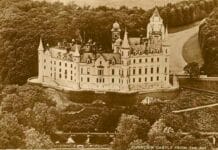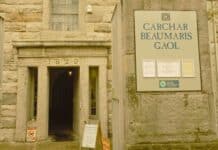Green Ladies are a curious phenomenon, writes MJ STEEL COLLINS.
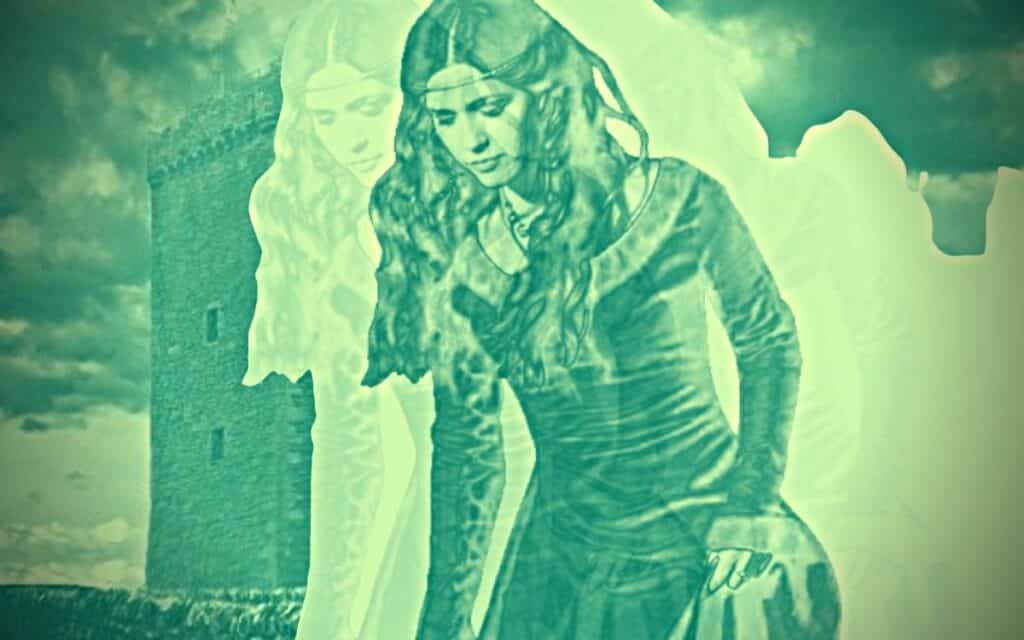
Almost exclusively a Scottish occurrence, with a few exceptions as we shall see later, a few theories have been rolled out to explain what Green Ladies are.
These include that they are the spirits of women that have been enchanted by the fairies; that they are actual elemental beings called Gruagachs and Glaistigs.
One thing these green tinged beings often have in common is that they came out the unfortunate party in the eternal game of love, though not all tales follow this theme.
Borthwick Castle, Gorebridge, Midlothian
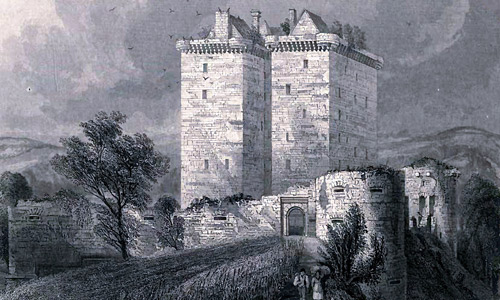
A particularly nasty tale associated with Borthwick Castle is that Ann Grant, a servant, was impregnated by the Laird. In order to cover his tracks, the Laird had Ann slaughtered whilst heavily pregnant in the castle’s Red Room, by having her slit across the stomach and left to bleed to death.
The spectral re-enactment of this horrific event has been reported in the Red Room, along with the sounds of footsteps and drops in temperature and also the sound of wailing. One resident of the castle had the room exorcised after seeing the ghost, which is supposed to hate men.
Fyvie Castle, Turriff, Aberdeenshire
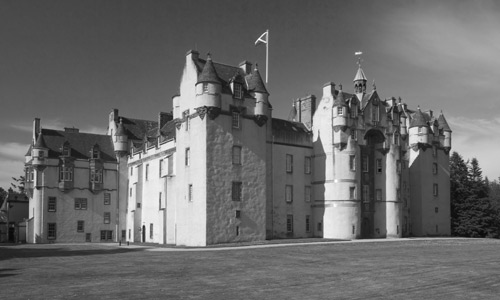
The Green Lady is just one of several ghosts to haunt Fyvie, now in the care of the National Trust for Scotland. The ghost is said to be that of Dame Lillian Drummond, who died in 1601, having been starved to death by her husband.
In 1920, a huge fungus appeared on the wall of the castle’s gun room, resulting in then Laird, Lord Leith, calling in the builders. The workmen took down the wall, and behind it, found the full skeleton of a woman. Lord Leith had it removed and buried, after which, the ghost began her haunting. One maid, adamant that ghosts did not exist, was terrified one night in her bedroom, when a white female figure glided through the wall, wearing a greenish white gown.
The skeleton was replaced behind the wall in an effort to stop the haunting, but Dame Lillian is apparently still active. In 2012, in a Hallowe’en special report, castle manager Robert Lovie told STV news that he shared his living quarters with the Green Lady. She had been the source of poltergeist activity, and had been seen by Lovie’s friends and family.
Dunstaffnage Castle, Oban, Argyllshire
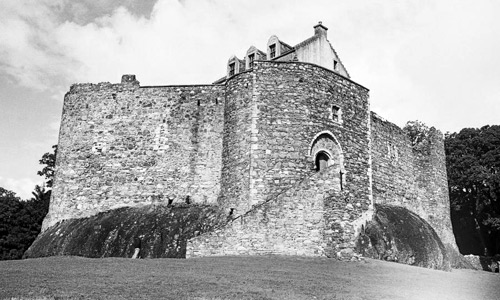
It’s believed the Green Lady at Dunstaffnage, is in fact a Glaistig, an entity often associated with water.
This is a rare case where love and romance don’t play a part in the associated folklore, and little is actually known of the Glaistig’s origins, save that she was once called the Elle Maid or Scannag, according to Peter Underwood.
She apparently was seen being sad at the impending death of the Campbell family, who once lived at the castle, or happy prior to happier events. Also, she was said to tease and play with the family’s children – an affinity for children is something associated with that other green being, the Gruagach.
Huntingtower Castle, Perthshire
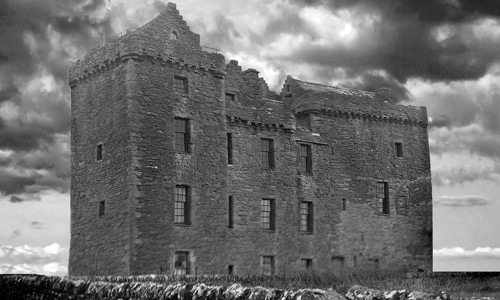
Like the Glaistig at Dunstaffnage, it appears the resident Green Lady at Huntingtower has also dispensed with love. Known as Lady Greensleeves, she was said to haunt the castle and the surrounding former estate, being something of a guardian to the people who lived there. There are two tales detailing her protective nature. One day, young boy lay seriously ill in a house on the estate.
His mother was loathe to leave him alone, but had to in order to fetch the lad medicine from Perth, which would take several hours. He was at death’s door when she left, but on her return, found him sitting up smiling in bed. On being asked what had happened, he said that he had been visited by a ‘bonnie lady in green’, who sat with him and stroked his forehead. On her touch, he immediately felt better.
In the second tale, an old man living in a cottage near Huntingtower was rumoured to have a large sum of money stowed away. Thieves broke in and demanded the cash. The old man handed over what he had, and was dragged outside and beaten to ‘persuade’ him to take the thieves to the treasure the old man was said to have hidden in a cave.
During the beating, the old man looked towards an open window at the castle, and the look of surprise on his face took the thieves aback. They turned to see what caught his attention, and ran off terrified at the sight of Lady Greensleeves watching them from the window, with her eyes full of fire.
Woodhouselee, Pentland Hills, near Edinburgh
The old mansion was demolished in 1965, and had a resident ghost described as both a White and Green Lady. The story goes that she was the ghost of Lady Hamilton, wife of James Hamilton of Bothwellhaugh, who supported Mary, Queen of Scots, had murdered the Regent Moray in 1570.
One night while Hamilton was away, his wife opened the door to a man who stated he was a friend of Hamilton, and managed to charm his way inside. However, things turned sour, and the stranger tore the clothes from Lady Hamilton before forcing her and her baby son out the house. It was a freezing night, and the baby died.
James Hamilton found his wife holding the corpse of their baby in the garden. She had gone insane and died not long after.
Afterward, her ghost was seen wandering the grounds and ruins. The man who had put her and the child out faced no repercussions as he had been a friend of Regent Moray.
Caerphilly Castle, Wales
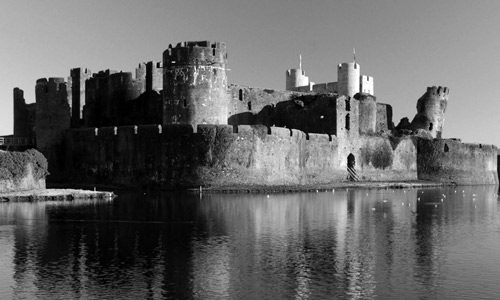
The tale of the Green Lady of Caerphilly Castle unexpectedly appeared in Doctor Who Confidential, when a tour guide took Matt Smith and Karen Gillan through the haunted tales of the castle, where the series six two parter The Rebel Flesh/The Almost People was filmed. Caerphilly’s Green Lady follows the traditional tale of love gone wrong.
Princess Alice de la Marche of France was a niece of Henry II and wife of Gilbert De Clare, Earl of Gloucester and owner of the castle. Alice had grown sick of her husband’s warlike tendencies. She fell in love with a local knight, or prince, Gruffyd the Fair. Gruffyd told a monk of his affair with Alice, and word soon got back to De Clare, who had Gruffyd hanged.
When Alice, who had been sent back to France in the meantime, was told, she dropped down dead on the spot of a broken heart. Her glowing green apparition can be seen on moonlit nights standing on the castle walls, waiting for her lover’s return.




